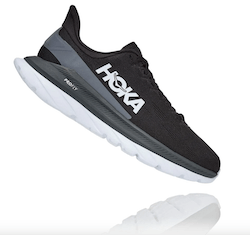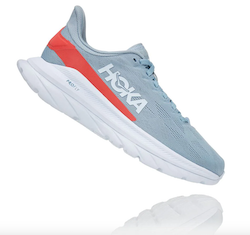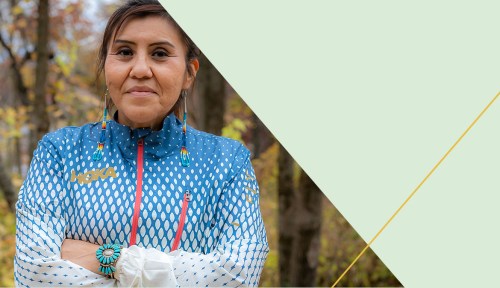Whether training for races is your thing or you’re just dipping your toes into the world of running, think back to how you were feeling the first time you laced up your sneakers (even if that was just a few minutes ago).
If feeling intimidated was right up there with motivated and excited, you’re not alone. And that’s not just because running is physically challenging—it’s also gained the reputation of being only for a certain group of people.
But no matter where your starting point is, there is no one definition of a runner. To prove it, we teamed up with HOKA ONE ONE® to ask three women with different backgrounds to share their experience with running and the hurdles (both physical and mental) they’ve had to overcome along the way.
At the end of the day, all you have to do is put one foot in front of the other, and you can automatically wear the title of “runner” with pride.
The biggest takeaways? Getting started is a lot easier when you have good advice—on everything from developing an empowering mindset to choosing the right shoes (like the HOKA Women’s Mach 4, which has cushioning specifically designed for logging long miles, if you’re a distance runner). Because at the end of the day, all you have to do is put one foot in front of the other, and you can automatically wear the title of “runner” with pride.
Keep reading for 3 women’s running advice for beginners.

Latoya Shauntay Snell, runner, and food and fitness blogger at Running Fat Chef
Inspired by a friend on social media who signed up for a half-marathon, Snell (who was not a runner at the time) signed up for a race herself as a bucket-list item—then she fell in love. Flash-forward eight years, and now she’s the content creator behind Running Fat Chef.
What is the biggest misconception people have about what it means to be a runner?
Oftentimes I think people think that being a runner means you have to look like a one-dimensional stereotype of what mainstream media visually painted runners to be over the years. If you are not facing any medical issues that will restrict you from running, please know that you do not have to wait until you reach a certain size, weight, or dress code to run.
“Please know that you do not have to wait until you reach a certain size, weight, or dress code to run.”
What is your biggest piece of running advice for beginners?
When those endorphins roll in, it is easy to push off things like hydration, proper fueling, stretching, and sleeping. It’s not as fun chronicling on social media, but your body will thank you for respecting these needs. Instead of viewing rest and recovery as a bad thing, view them as an essential part of your training plan.

Nicol Hodges, runner and global creative manager
After falling in love with running at age 14, Hodges went on to run for the University of Missouri-Columbia, becoming one of the top 400-meter runners in the Big 12. After deciding going pro wasn’t for her, she rediscovered the joy of running at a St. Patricks Day 5K, and now takes pride in having run everything from a 55-meter dash to a marathon over the past 35 years.
What is your biggest piece of running advice for beginners?
If you aspire to be a runner, it’s literally putting one foot in front of the other. Go at your own pace, and in your own time! Running is definitely a love/hate relationship, but it can also be very beneficial in so many ways!
What is your advice for picking out a running shoe that works best for you?
Just because it says it’s a “running shoe” doesn’t mean it is a running shoe. When picking the right running shoe, consider your size (body weight), running foot position (pronation, supination, or neutral) and how many miles a day you will be running. The construction of a running shoe not only protects your feet, but it also protects your knees, hips, and ankles. The construction and protection of HOKA shoes are incredible: They are light in weight, and they happen to be good-looking running shoes that perform like true running shoes!
FYI: It’s often useful to get fitted for a shoe at your local running store, but in the meantime, HOKA has an online shoe-finder tool to get you started.
SHOP SHOES

HOKA Women's Mach 4 $130

HOKA Women's Mach 4 $130

HOKA Women's Mach 4 $130

Verna Volker, runner, teacher, and founder of Native Women Running
In 2007, Volker ran a 2.1-mile race in honor of her best friend who had passed away. After being inspired by the runners who opted for the 5-mile course, she eventually signed up for a half-marathon. Despite not being well-prepared, she finished the 13.1 miles, and started on her journey of becoming a marathoner, ultra-marathoner, and the founder of Native Women Running.
What is the one piece of advice you wish you could go back and give yourself when you were just starting out running?
The one piece of advice I would give myself is to do research on training plans. When I first started running, I did very little research on training for a half-marathon. This includes hydration, nutrition, rest, pace, and mileage.
Also, never underestimate what your body and mind can do. There were many times that I almost gave up on running. But with every goal I met and every race I finished, I became confident physically and mentally. Running has been a slow steady process for me. There have been setbacks, injury, health issues, and lack of confidence. Becoming a strong runner will not happen overnight. Learn to embrace the slow process.
“Becoming a strong runner will not happen overnight. Learn to embrace the slow process.”
What is the biggest misconception people have about what it means to be a runner?
Growing up, the image of running [to me] was the white, blonde, fit, and fast runner. That was an image that was embedded in my mind. Though running was part of my Native culture, it was never a part of my life. As I became more versed in the running culture, I noticed a pattern of homogeneous runners displayed in everything related to running. Today, I strongly believe that we must create our own space in running. We all want to feel that we are part of the running narrative. It’s for people like me who change that misconception.
Sign up for the Well+Good SHOP Newsletter
Get exclusive deals on wellness, beauty, fitness, and food products that have been hand-picked by our editors.
Got it, you've been added to our email list.





